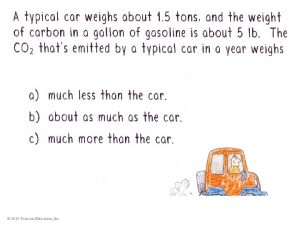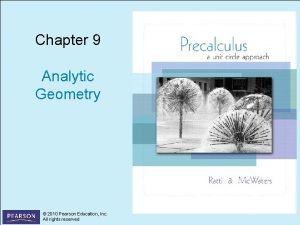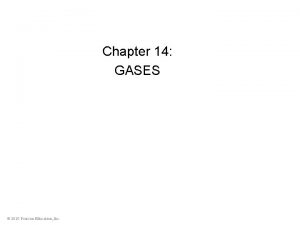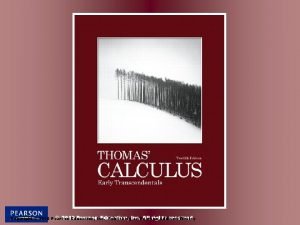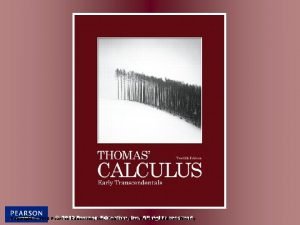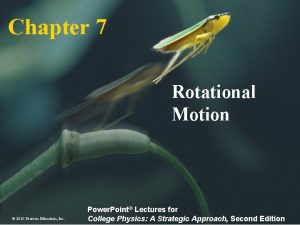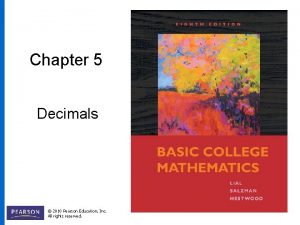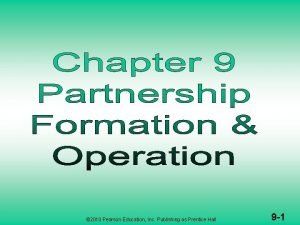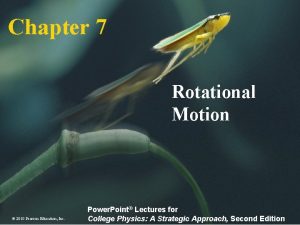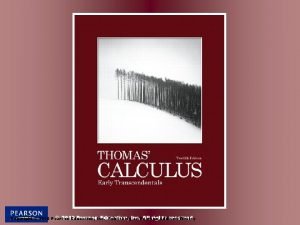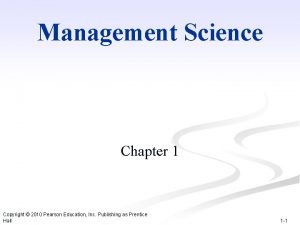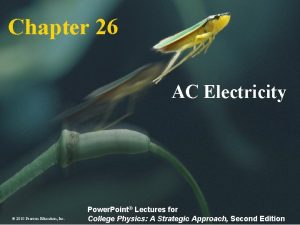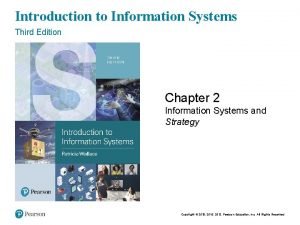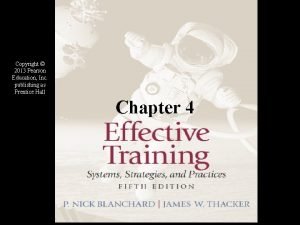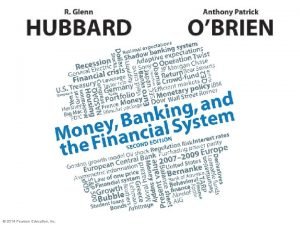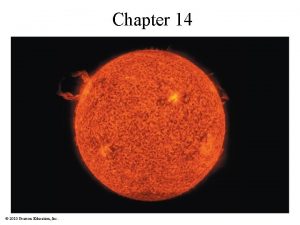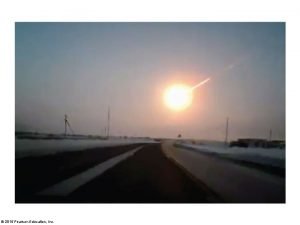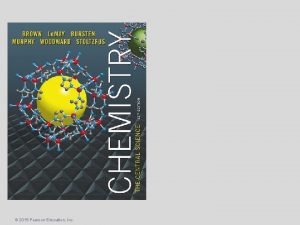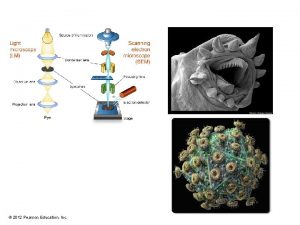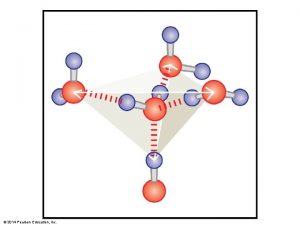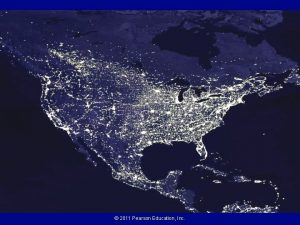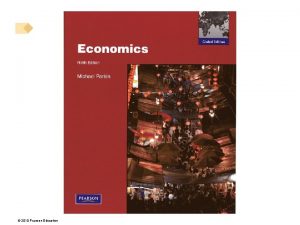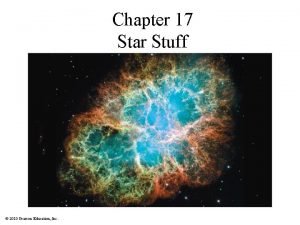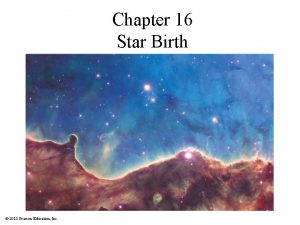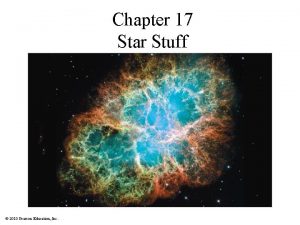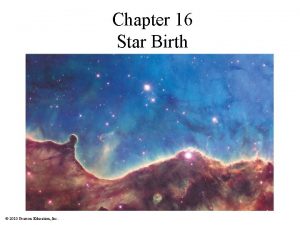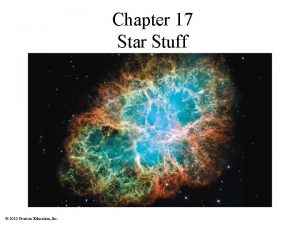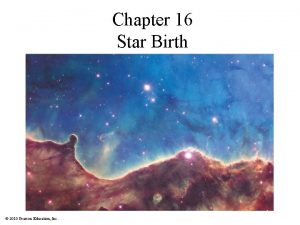Chapter 14 Our Star 2010 Pearson Education Inc



























































- Slides: 59

Chapter 14 Our Star © 2010 Pearson Education, Inc.

14. 1 A Closer Look at the Sun Our goals for learning: • Why was the Sun’s energy source a major mystery? • Why does the Sun shine? • What is the Sun’s structure? © 2010 Pearson Education, Inc.

Why was the Sun’s energy source a major mystery? © 2010 Pearson Education, Inc.

Is it on FIRE? © 2010 Pearson Education, Inc.

Is it on FIRE? Chemical energy content Luminosity © 2010 Pearson Education, Inc. ~ 10, 000 years

Is it on FIRE? … NO! Chemical energy content Luminosity © 2010 Pearson Education, Inc. ~ 10, 000 years

Insert TCP 6 e Chapter 14 opener Is it CONTRACTING? © 2010 Pearson Education, Inc.

Is it CONTRACTING? Gravitational potential energy Luminosity © 2010 Pearson Education, Inc. ~ 25 million years

Is it CONTRACTING? … NO! Chemical energy content Luminosity © 2010 Pearson Education, Inc. ~ 10, 000 years

Why does the Sun shine? © 2010 Pearson Education, Inc.

It can be powered by NUCLEAR ENERGY! (E = mc 2) Nuclear potential energy (core) Luminosity © 2010 Pearson Education, Inc. ~ 10 billion years

Insert TCP 6 e Figure 14. 1 Weight of upper layers compresses lower layers. © 2010 Pearson Education, Inc.

Gravitational equilibrium: Energy supplied by fusion maintains the pressure that balances the inward crush of gravity. © 2010 Pearson Education, Inc.

Gravitational contraction: Provided the energy that heated the core as Sun was forming Contraction stopped when fusion began. © 2010 Pearson Education, Inc.

What is the Sun’s structure? Insert TCP 6 e Figure 14. 3 © 2010 Pearson Education, Inc.

Radius: 6. 9 108 m (109 times Earth) Mass: 2 1030 kg (300, 000 Earths) Luminosity: 3. 8 1026 watts © 2010 Pearson Education, Inc.

Solar wind: A flow of charged particles from the surface of the Sun © 2010 Pearson Education, Inc.

Corona: Outermost layer of solar atmosphere ~1 million K © 2010 Pearson Education, Inc.

Chromosphere: Middle layer of solar atmosphere ~ 104– 105 K © 2010 Pearson Education, Inc.

Photosphere: Visible surface of Sun ~ 6000 K © 2010 Pearson Education, Inc.

Convection Zone: Energy transported upward by rising hot gas © 2010 Pearson Education, Inc.

Radiation Zone: Energy transported upward by photons © 2010 Pearson Education, Inc.

Core: Energy generated by nuclear fusion ~ 15 million K © 2010 Pearson Education, Inc.

14. 2 The Cosmic Crucible Our goals for learning: • How does nuclear fusion occur in the Sun? • How does the energy from fusion get out of the Sun? • How do we know what is happening inside the Sun? © 2010 Pearson Education, Inc.

How does nuclear fusion occur in the Sun? © 2010 Pearson Education, Inc.

Fission Fusion Big nucleus splits into smaller pieces. Small nuclei stick together to make a bigger one. (Example: nuclear power plants) © 2010 Pearson Education, Inc. (Example: the Sun, stars)

High temperatures enable nuclear fusion to happen in the core. © 2010 Pearson Education, Inc.

The Sun releases energy by fusing four hydrogen nuclei into one helium nucleus. © 2010 Pearson Education, Inc.

The proton–proton chain is how hydrogen fuses into helium in Sun. © 2010 Pearson Education, Inc.

IN 4 protons OUT 4 He nucleus 2 gamma rays 2 positrons 2 neutrinos Total mass is 0. 7% lower. © 2010 Pearson Education, Inc.

Thought Question What would happen inside the Sun if a slight rise in core temperature led to a rapid rise in fusion energy? A. The core would expand heat up slightly. B. The core would expand cool. C. The Sun would blow up like a hydrogen bomb. © 2010 Pearson Education, Inc.

Thought Question What would happen inside the Sun if a slight rise in core temperature led to a rapid rise in fusion energy? A. The core would expand heat up slightly. B. The core would expand cool C. The Sun would blow up like a hydrogen bomb. The solar thermostat keeps burning rate steady. © 2010 Pearson Education, Inc.

Solar Thermostat Decline in core temperature causes fusion rate to drop, so core contracts and heats up. © 2010 Pearson Education, Inc. Rise in core temperature causes fusion rate to rise, so core expands and cools down.

How does the energy from fusion get out of the Sun? © 2010 Pearson Education, Inc.

Energy gradually leaks out of radiation zone in form of randomly bouncing photons. © 2010 Pearson Education, Inc.

Convection (rising hot gas) takes energy to surface. © 2010 Pearson Education, Inc.

Bright blobs on photosphere show where hot gas is reaching the surface. © 2010 Pearson Education, Inc.

How we know what is happening inside the Sun? © 2010 Pearson Education, Inc.

We learn about the inside of the Sun by … • making mathematical models • observing solar vibrations • observing solar neutrinos © 2010 Pearson Education, Inc.

Patterns of vibration on the surface tell us about what the Sun is like inside. © 2010 Pearson Education, Inc.

Data on solar vibrations agree very well with mathematical models of solar interior. © 2010 Pearson Education, Inc.

Neutrinos created during fusion fly directly through the Sun. Observations of these solar neutrinos can tell us what’s happening in core. © 2010 Pearson Education, Inc.

Solar neutrino problem: Early searches for solar neutrinos failed to find the predicted number. More recent observations find the right number of neutrinos, but some have changed form. © 2010 Pearson Education, Inc.

14. 3 The Sun–Earth Connection Our goals for learning: • What causes solar activity? • How does solar activity affect humans? • How does solar activity vary with time? © 2010 Pearson Education, Inc.

What causes solar activity? © 2010 Pearson Education, Inc.

Solar activity is like “weather”. • Sunspots • Solar flares • Solar prominences All these phenomena are related to magnetic fields. © 2010 Pearson Education, Inc.

Sunspots Are cooler than other parts of the Sun’s surface (4000 K) Are regions with strong magnetic fields © 2010 Pearson Education, Inc.

Zeeman Effect We can measure magnetic fields in sunspots by observing the splitting of spectral lines. © 2010 Pearson Education, Inc.

Charged particles spiral along magnetic field lines. © 2010 Pearson Education, Inc.

Loops of bright gas often connect sunspot pairs. © 2010 Pearson Education, Inc.

Magnetic activity causes solar flares that send bursts of X rays and charged particles into space. © 2010 Pearson Education, Inc.

Magnetic activity also causes solar prominences that erupt high above the Sun’s surface. © 2010 Pearson Education, Inc.

The corona appears bright in X-ray photos in places where magnetic fields trap hot gas. © 2010 Pearson Education, Inc.

How does solar activity affect humans? © 2010 Pearson Education, Inc.

Coronal mass ejections send bursts of energetic charged particles out through the solar system. © 2010 Pearson Education, Inc.

Charged particles streaming from the Sun can disrupt electrical power grids and can disable communications satellites. © 2010 Pearson Education, Inc.

How does solar activity vary with time? © 2010 Pearson Education, Inc.

Insert TCP 6 e Figure 14. 21 a unannotated The number of sunspots rises and falls in an 11 -year cycle. Insert TCP 6 e Figure 14. 21 b unannotated © 2010 Pearson Education, Inc.

The sunspot cycle has something to do with winding and twisting of the Sun’s magnetic field. © 2010 Pearson Education, Inc.
 2010 pearson education inc
2010 pearson education inc Copyright 2010 pearson education inc
Copyright 2010 pearson education inc 2010 pearson education inc
2010 pearson education inc 2010 pearson education inc answers
2010 pearson education inc answers 2010 pearson education inc answers
2010 pearson education inc answers 2010 pearson education inc answers
2010 pearson education inc answers 2010 pearson education inc
2010 pearson education inc 2010 pearson education inc
2010 pearson education inc Copyright 2010 pearson education inc
Copyright 2010 pearson education inc 2010 pearson education inc
2010 pearson education inc Copyright 2010 pearson education inc
Copyright 2010 pearson education inc The four forces shown have the same strength
The four forces shown have the same strength 2010 pearson education inc answers
2010 pearson education inc answers 2010 pearson education inc
2010 pearson education inc Pearson education inc. publishing as prentice hall
Pearson education inc. publishing as prentice hall 2010 pearson education inc
2010 pearson education inc Two coins rotate on a turntable
Two coins rotate on a turntable 2010 pearson education inc
2010 pearson education inc 2010 pearson education inc
2010 pearson education inc 2010 pearson education inc answers
2010 pearson education inc answers 2010 pearson education inc answers
2010 pearson education inc answers 2010 pearson education inc
2010 pearson education inc Copyright 2010 pearson education inc
Copyright 2010 pearson education inc Copyright 2010 pearson education inc
Copyright 2010 pearson education inc Copyright 2010 pearson education inc
Copyright 2010 pearson education inc Copyright 2010 pearson education inc
Copyright 2010 pearson education inc Copyright 2010 pearson education inc
Copyright 2010 pearson education inc Copyright 2010 pearson education inc
Copyright 2010 pearson education inc Copyright 2010 pearson education inc
Copyright 2010 pearson education inc Pearson education inc. all rights reserved
Pearson education inc. all rights reserved 2010 pearson education inc answers
2010 pearson education inc answers Balance sheet pearson
Balance sheet pearson Reorder point formula example
Reorder point formula example 2010 pearson education inc
2010 pearson education inc Prentice hall publishing
Prentice hall publishing 2011 pearson education inc
2011 pearson education inc Pearson education inc publishing as pearson prentice hall
Pearson education inc publishing as pearson prentice hall Pearson 2012
Pearson 2012 2008 pearson prentice hall inc
2008 pearson prentice hall inc Myrrh is mine its bitter perfume
Myrrh is mine its bitter perfume Copyright pearson education inc
Copyright pearson education inc Pearson education ltd
Pearson education ltd 2017 pearson education inc
2017 pearson education inc 2017 pearson education inc
2017 pearson education inc 2017 pearson education inc
2017 pearson education inc 2017 pearson education inc
2017 pearson education inc 2017 pearson education inc
2017 pearson education inc Pearson education inc 4
Pearson education inc 4 Pearson education, inc.
Pearson education, inc. 2014 pearson education inc
2014 pearson education inc 2013 pearson education inc
2013 pearson education inc 2013 pearson education inc
2013 pearson education inc Performance gap
Performance gap 2013 pearson education inc
2013 pearson education inc 2012 pearson education inc
2012 pearson education inc 2012 pearson education inc
2012 pearson education inc Pearson education 2012
Pearson education 2012 2009 pearson education inc
2009 pearson education inc 2016 pearson education inc
2016 pearson education inc 2014 pearson education inc
2014 pearson education inc



